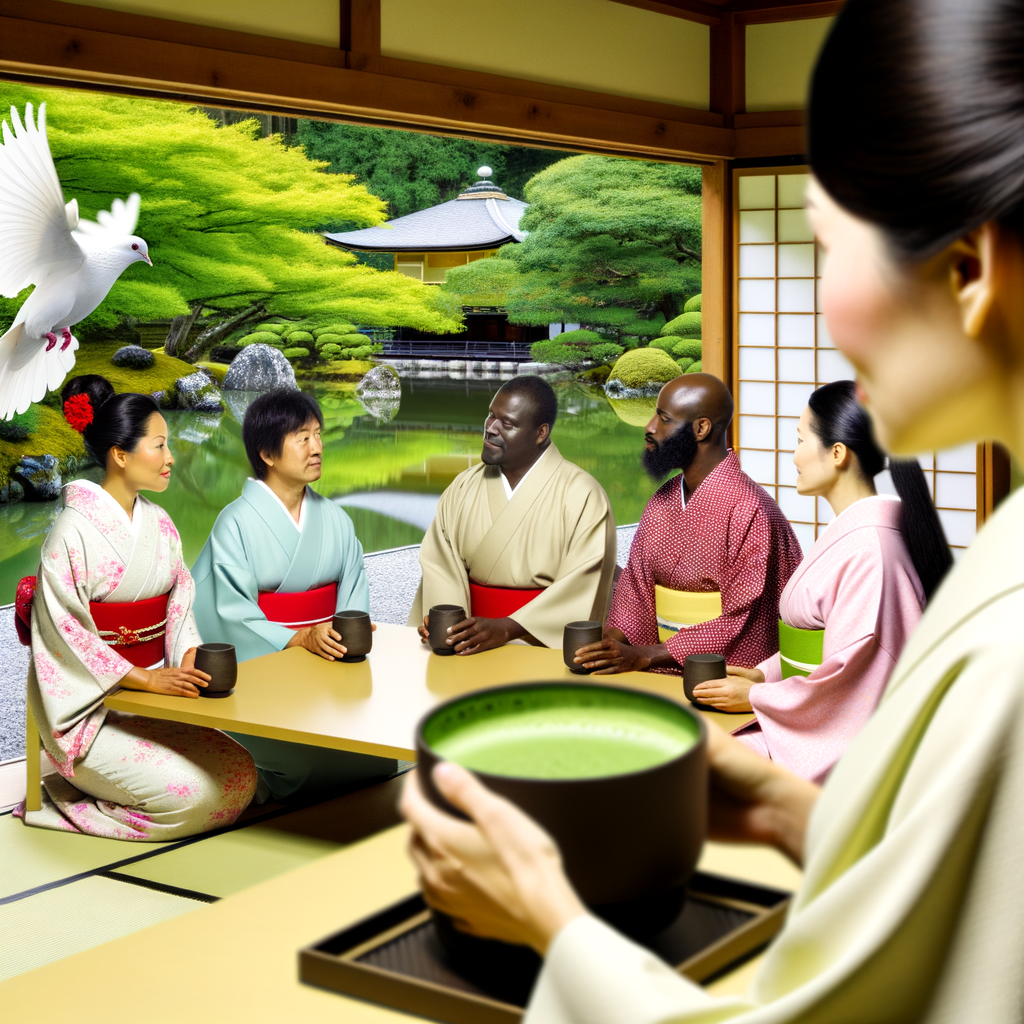In the land of the rising sun, nestled amidst the hustle and bustle of modern life, there exists a tradition that is as timeless as it is exquisite. The Japanese Tea Ceremony, known as chanoyu or chado, is a ritual steeped in centuries of history and steeped in symbolism. From the careful preparation of matcha tea to the deliberate movements of the host, every aspect of the ceremony is a reflection of peace and beauty. Join us as we delve into the world of this ancient practice and uncover the harmonious blend of tradition and tranquility that is the Japanese Tea Ceremony.
Exploring the Symbolism Behind the Tea Ceremony
The Japanese Tea Ceremony, also known as chanoyu or chado, is a traditional ritual deeply rooted in Japanese culture. It is not just about drinking tea; it is a symbolic experience that embodies harmony, respect, purity, and tranquility. The ceremony is a sacred art form that reflects the Zen Buddhist principles of mindfulness and simplicity.
<p>One of the key elements of the tea ceremony is the meticulous attention to detail in every aspect of the process. From the preparation of the tea to the design of the teahouse, every gesture and item holds symbolic meaning. For example, the act of purifying the utensils before the ceremony symbolizes the cleansing of the mind and spirit.</p>
<p>In addition, the spatial arrangement of the tea room itself is carefully considered to create a sense of harmony and balance. The use of natural materials like bamboo and wood, along with minimalistic decor, creates a tranquil and meditative atmosphere. Each element of the ceremony is meant to evoke a sense of peace and beauty, allowing participants to connect with themselves, others, and the natural world.</p>Mastering the Art of Mindfulness in Tea Preparation
Embark on a journey to discover the art of mindfulness through the serene practice of preparing tea. Beyond just a simple beverage, tea preparation can be a meditative ritual that brings peace and beauty to everyday life.
Central to this practice is the Japanese Tea Ceremony, known as Chanoyu or Chado. Rooted in Zen Buddhism, this centuries-old tradition emphasizes harmony, respect, purity, and tranquility. The Japanese Tea Ceremony is a cultural expression of mindfulness in action, where every movement is deliberate and every gesture is meaningful.
requires patience, focus, and a deep appreciation for the present moment. By taking the time to engage all of our senses in the process of preparing and enjoying tea, we can cultivate a sense of inner peace and connection to the world around us.
Creating a Tranquil Space for the Ceremony
For the Japanese Tea Ceremony, creating a tranquil space is essential to set the mood for this ritual of peace and beauty. The ceremony is not just about drinking tea but also about finding harmony and tranquility in the moment. Here are some tips on how to create a serene space for your tea ceremony:
- Choose a quiet and peaceful location for the ceremony, away from distractions and noise.
- Use natural materials such as wood, bamboo, and paper to decorate the space, evoking a sense of nature and simplicity.
- Light candles or incense to create a calming atmosphere and enhance the sensory experience.
- Arrange seating in a circle or semi-circle to facilitate communication and connection among participants.
By paying attention to the details of the environment, you can enhance the overall experience of the Japanese Tea Ceremony and create a space that promotes relaxation and mindfulness. Remember, the goal is to cultivate a sense of inner peace and harmony through this ancient ritual.
Embarking on a Journey of Inner Peace through Tea Art
Within the serene walls of a traditional Japanese tea room, a centuries-old ritual unfolds. The Japanese Tea Ceremony is a harmonious blend of precision, grace, and mindfulness, creating a space for inner peace and tranquility.
As guests enter the sacred space, they are greeted by the soothing aroma of freshly brewed tea and the intricate arrangement of utensils on display. Each movement, from the careful preparation of the tea to the gentle whisking of the matcha powder, is executed with utmost care and intention.
**The art of the Japanese Tea Ceremony is a meditation in motion, a dance of beauty and simplicity that invites participants to slow down, savor each moment, and connect with their inner selves.**
- Experience the art of traditional Japanese tea-making
- Discover the beauty of mindfulness and presence
- Nourish your soul with a moment of peace and tranquility
| Utensils | Meaning |
|---|---|
| Chawan (tea bowl) | Representing the harmony between host and guest |
| Chasen (tea whisk) | Symbolizing the purity of heart and mind |
| Chashaku (tea scoop) | Signifying respect and gratitude |
| Kensui (waste water bowl) | Reflecting the impermanence of life |
**Embark on a journey of inner peace and self-discovery through the art of the Japanese Tea Ceremony. Let go of the chaos of the outside world and immerse yourself in a ritual that celebrates beauty, harmony, and mindfulness.**
As we delve into the exquisite world of the Japanese Tea Ceremony, we are reminded of the power of simplicity, mindfulness, and the reverence for nature that this ancient ritual embodies. Through each meticulous movement and serene sip of tea, we are invited to slow down, find peace in the present moment, and appreciate the beauty that surrounds us. Whether practiced in a traditional tea house or modern setting, the Japanese Tea Ceremony serves as a gentle reminder of the harmony that can be found in the simplest of gestures. So as we continue our journey through life, may we carry with us the spirit of tranquility and grace that the tea ceremony has to offer, and may we always find solace in the ritual of peace and beauty.

